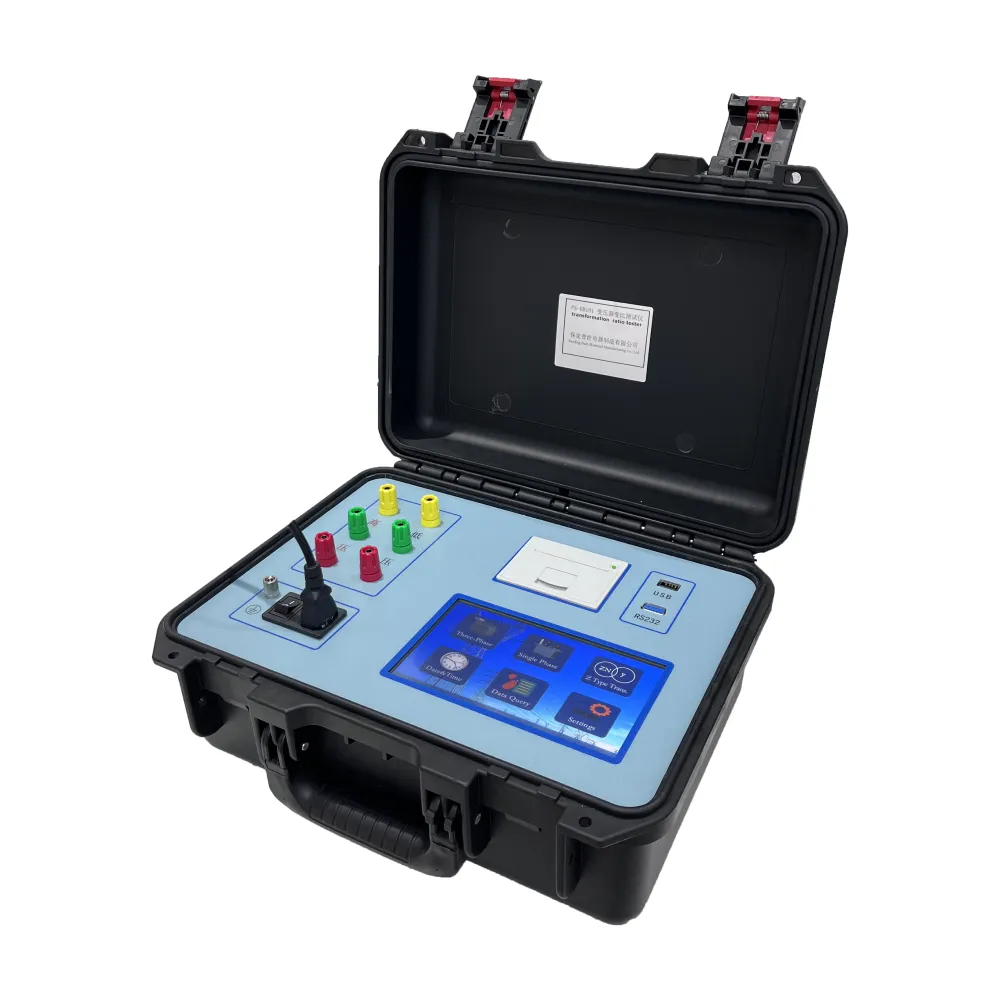TEL:
+86-0312-3189593
 English
English

Telephone:0312-3189593

Email:sales@oil-tester.com
7 月 . 12, 2024 06:02
Back to list
Exploring the Use and Applications of Gas Chromatography in Analytical Chemistry
Gas chromatography (GC) is a widely used analytical technique in chemistry and biochemistry. It is used to separate and analyze compounds that can be vaporized without decomposition. The basic principle of gas chromatography is the partitioning of a mixture between a stationary phase (typically a liquid or solid coating on a column) and a mobile phase (a carrier gas). The components of the mixture interact differently with the stationary phase, causing them to move at different rates through the column and separate into individual peaks on a chromatogram.
One of the key advantages of gas chromatography is its ability to analyze a wide range of compounds, from small volatile organic molecules to complex mixtures such as amino acids and steroids. This versatility makes GC a valuable tool in a variety of fields, including pharmaceuticals, environmental analysis, and forensic science. In pharmaceuticals, gas chromatography is used to analyze the purity and composition of drug compounds, while in environmental analysis, it can detect traces of pollutants in air, water, and soil. In forensic science, GC is used to analyze biological samples for the presence of drugs, poisons, and other substances.
Gas chromatography is also widely used in quality control and research laboratories to analyze the composition of complex mixtures. For example, it can be used to determine the alcohol content in beverages, the fatty acid profile in oils and fats, or the fragrance components in perfumes. In research laboratories, gas chromatography is used to identify unknown compounds, monitor chemical reactions, and quantify the amount of a specific compound in a sample

of gas chromatography. The instrumentation used in gas chromatography has evolved significantly over the years, with modern instruments offering high sensitivity, speed, and resolution. Gas chromatographs typically consist of a sample injector, a column, a detector, and a data system for signal processing and analysis. The most common detectors used in gas chromatography are flame ionization detectors (FID) and mass spectrometers (MS), which can provide information on the identity and quantity of compounds. Despite its many advantages, gas chromatography also has some limitations. For example, it is not suitable for analyzing compounds that are thermally labile or have high molecular weights. In addition, some compounds may have similar retention times on the column, making it difficult to separate them. However, these limitations can often be overcome by using specialized columns, detectors, or sample preparation techniques. In conclusion, gas chromatography is a powerful analytical technique that is widely used in a variety of fields for the separation and analysis of compounds. Its ability to analyze a wide range of compounds with high sensitivity and accuracy makes it an indispensable tool for researchers, analysts, and scientists. With ongoing advancements in instrumentation and methodology, gas chromatography continues to play a vital role in the advancement of science and technology.

of gas chromatography. The instrumentation used in gas chromatography has evolved significantly over the years, with modern instruments offering high sensitivity, speed, and resolution. Gas chromatographs typically consist of a sample injector, a column, a detector, and a data system for signal processing and analysis. The most common detectors used in gas chromatography are flame ionization detectors (FID) and mass spectrometers (MS), which can provide information on the identity and quantity of compounds. Despite its many advantages, gas chromatography also has some limitations. For example, it is not suitable for analyzing compounds that are thermally labile or have high molecular weights. In addition, some compounds may have similar retention times on the column, making it difficult to separate them. However, these limitations can often be overcome by using specialized columns, detectors, or sample preparation techniques. In conclusion, gas chromatography is a powerful analytical technique that is widely used in a variety of fields for the separation and analysis of compounds. Its ability to analyze a wide range of compounds with high sensitivity and accuracy makes it an indispensable tool for researchers, analysts, and scientists. With ongoing advancements in instrumentation and methodology, gas chromatography continues to play a vital role in the advancement of science and technology.
Latest news
-
Differences between open cup flash point tester and closed cup flash point testerNewsOct.31,2024
-
The Reliable Load Tap ChangerNewsOct.23,2024
-
The Essential Guide to Hipot TestersNewsOct.23,2024
-
The Digital Insulation TesterNewsOct.23,2024
-
The Best Earth Loop Impedance Tester for SaleNewsOct.23,2024
-
Tan Delta Tester--The Essential Tool for Electrical Insulation TestingNewsOct.23,2024





